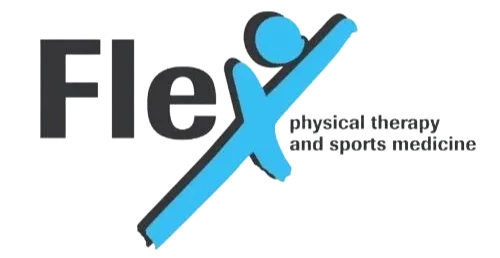 Hey everybody, this is Mike Uhrlaub, and this is another episode of Power Your Life. There are many things about back pain that can cause harm. Many of my patients frequently ask me the same question, and that is when they should get help for back pain. This is a valid concern that people have because most of us don’t know when we should seek help. We don’t know when a little ache or a little pain is just going to go away on its own. Let’s face it, for those of us that are getting older, it seems like every day we wake up with a new pain or ache somewhere. However, we don’t run to the doctor every time we feel something is wrong, and it usually tends to work itself out.
Hey everybody, this is Mike Uhrlaub, and this is another episode of Power Your Life. There are many things about back pain that can cause harm. Many of my patients frequently ask me the same question, and that is when they should get help for back pain. This is a valid concern that people have because most of us don’t know when we should seek help. We don’t know when a little ache or a little pain is just going to go away on its own. Let’s face it, for those of us that are getting older, it seems like every day we wake up with a new pain or ache somewhere. However, we don’t run to the doctor every time we feel something is wrong, and it usually tends to work itself out.
For back pain, this is the same way. We don’t run to the back specialist for every little ache and pain. Like a lot of my clients, I used to ignore it. I thought that if I ignored it, it would go away. However, this way of thinking rarely works. In fact, ignoring the pain is the fastest way to get yourself into trouble. I want to share a story about a former patient of mine, George, which is not his real name for identity protection. He was a client of mine and he had back pain on and off for several years.
He admitted to me that when he would have flare ups, he would usually just ignore it, and these would happen a few times a year. He would ignore it and eventually, it would just go away. However, as time passed, he started noticing that with each flare up, the pain was worse that the last one and the flare up would last longer. He knew deep down that this was not going away. Because George was a teacher, he would even have to miss class for a few days when these flare ups would occur.
It got to the point where he started having trouble standing upright, and then he couldn’t even sleep through the night. For those of you that work in education, you know that it is very hard to teach if you can’t stand up and it’s very hard to interact with your classroom. For George, it was hard for him to do his job when he couldn’t stand upright, and he just had to stay home. Once it started to progress to the point where he wasn’t sleeping, and he couldn’t get more than a couple hours of sleep, that’s when he finally decided to do something. The straw that broke the camel’s back for him was the day when he woke up and he could not stand upright.
He couldn’t get himself into a locked, upright position because the pain was so intense. He started using a walker, which was very frustration for him, and it was scary because he was only 42 years old. So, he couldn’t sleep, he couldn’t stand, and he couldn’t even get in and out of a car without being in excruciating pain. With the car, it was the process of turning his body and bending his head down to clear the hood of the car that was painful for him. Therefore, one of the main things he wanted to work on when he came in for therapy was just getting in and out of the car.
He also got to the point where he couldn’t put on his socks and shoes because he couldn’t bend over. He could not slip his own socks and shoes on, forcing him to only be able to wear Birkenstocks. He had to wear slip on sandals because it was the only thing that he could slide on and slide off without causing excruciating pain. He started getting concerned and worried he wouldn’t be able to return to work, do yard work housework, or even play with his 10-year-old son. This started to slip into a depression, and along with that, he started having anxiety with panic attacks. He told me on numerous occasions that he felt like he was letting everybody down.
He felt that he shouldn’t be having this kind of problem at 42 years of age. He felt that he wasn’t filling his role as a teacher, as a father, and as a husband. Everything seemed to be spinning out of control for him and every day was a constant struggle. Now, it took him several months, but he was able to gain his ability to be able to stand, walk, and get in and out of the car. Eventually, he made a full recovery, but he had missed so much work up to that point that he nearly lost his job. I still remember George asking me, “What could I have done to avoid it getting this bad again?”
He was thinking for the future too and he wanted to know the warning signs of when something is mild and will go away on its own or if it’s something that needs to get taken care of as soon as possible. He didn’t want to be a complainer and he didn’t think his situation was that serious until it really started to spiral out of control. Now, most of us are just like George. We don’t know when we should get help. I want to cover that with you because there are several facts about back pain that you should know.
The first one is that back pain usually gets worse over time, unless you start fixing it naturally. If you fix it naturally, sometimes that pain will go away, but it does not mean that your spine is getting better. It just means that your body has taken care of the acute inflammation. However, the problem that still causing the present back pain rarely gets better on its own. Your body will try and protect itself by laying down calcium deposits through the spine to stabilize these problematic areas. This will then lead to what we call osteophytes, which are nothing more than bone spurs. Eventually, this will lead to early arthritis. However, the pain may decrease because as the body lays down the calcium around the vertebrae and temporarily stabilizes, it starts to stiffen the joint and takes that pain away.
The pain may decrease for a little while, but it typically comes back. When it comes back, it comes back even worse. So, here is when you should worry. The first thing you should look for if you’re having back pain is if you have lost flexibility in your hamstrings. These are the muscles in the back of your legs. You may start to notice that touching your toes is harder and harder. However, you may be tight to begin with and it not that abnormal for your hamstrings to be tight. But with this, the tightness will be increasing. So, you’re losing the flexibility that you had, where maybe you couldn’t touch your toes, but you bend over and get halfway down your shin. Suddenly, your back hurts and you start noticing that you can’t even touch past your knees.
That’s when you need to start to worry and you need to take action. Also, if you have difficulty getting in and out of your car; that’s number two. If you have trouble getting in and out of your car, especially when you’re losing that flexibility in your spine to be able to flex as you get in, you need to start worrying. The third thing is that if you feel like getting out of bed is a chore. I’m not talking about getting out of bed in the morning because you’re tired. I’m talking about your back pain. So, if your back pain gets worse in the morning to the point to where you are having more trouble getting out of bed and your back feel very stiff, then you should start to worry.
The fourth thing is when pain starts shooting to other parts of the body. If it starts going into your hips, your buttocks, or down your leg, you need to take action. You might feel numbness in the toes or legs, and that’s a definite red flag. If you start getting pain in the groin region or the saddle region, you need to get some help. Also, if you have difficulty urinating or you have pain while having a bowel movement, you need to get checked out.
The last red flag is if you’re developing any weakness in the toe, ankle, or knee, you need to seek help. Whether you go to a physical therapist or your doctor, you need to get it checked out. Now, these signs all mean that your back pain is leading to nerve damage or irritation. This means that it’s time to seek a professional and start taking action, or it could lead to bigger problems like in George’s case. Often, I see my clients in the clinic and think that if we could have gotten to them just a little bit earlier, we could have greatly shortened how long it was going to take for them to get better.
I really hope this can help you make a good decision on when you should get help for your back. If you would like more information on what you can do for your back, just shoot me a Facebook message, or you can even email me @mikeatflex-pt.com and ask for a copy of my free eBook, “The Five Best Kept Secrets For Fast Back Pain Relief.” It’s got a lot of great information that can be useful in helping you get your back better. So, until next time I want you to stay healthy and keep moving forward.
